开发极路由云插件
学会了编译ipk,也学会了opkg安装软件之后,下面讲解如何开发极路由应用(又称为APP或插件)。
最简单的应用
一个最简单的极路由应用只需要一个script脚本文件,比如这个“超级开发者”项目(https://coding.net/u/openwrtio/p/super-developer-for-hiwifi-os/git/tree/master),代码如下:
#!/bin/sh
install() {
opkg update
opkg install dropbear
/etc/init.d/dropbear enable
start
return $?
}
uninstall() {
stop
/etc/init.d/dropbear disable
opkg remove dropbear
return $?
}
start() {
/etc/init.d/dropbear start >/dev/null 2>&1
return $?
}
stop() {
/etc/init.d/dropbear stop >/dev/null 2>&1
return $?
}
# 检查运行状态
status() {
local stat="running"
pgrep dropbear >/dev/null 2>&1
if [ $? -ne 0 ];then
stat="stopped"
fi
echo "{ \"status\" : \"$stat\" }"
return $?
}
可以看到脚本语法是/bin/sh,包含了安装、卸载、启动、停止这几个函数,非常简单,学习一下sh语法即可。
发布到插件市场
把脚本拷贝到路由器中,可以手动安装,进行开发调试。
git clone git://git.coding.net/openwrtio/super-developer-for-hiwifi-os.git
cd super-developer-for-hiwifi-os
tar -zcvf tmp.tgz ./*
scp tmp.tgz [email protected]:/tmp/
ssh [email protected]
cd /tmp/
tar -zxvf tmp.tgz
(. ./script; install)
如果开发测试完成,如何提供给大家方便的安装?极路由做了插件市场,注册一个开发者帐号(https://open.hiwifi.com/),申请一个应用,把插件打包上传,即可在插件市场里安装(https://app.hiwifi.com/)。可通过“路由器后台”——》“云插件”进入市场,尚未发布时,在“我开发的”页面里安装。如果提交审核上线,用户就能看到了。
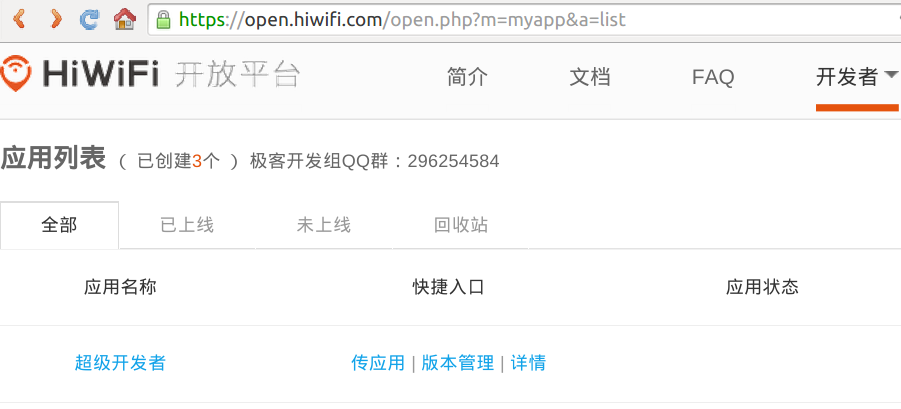
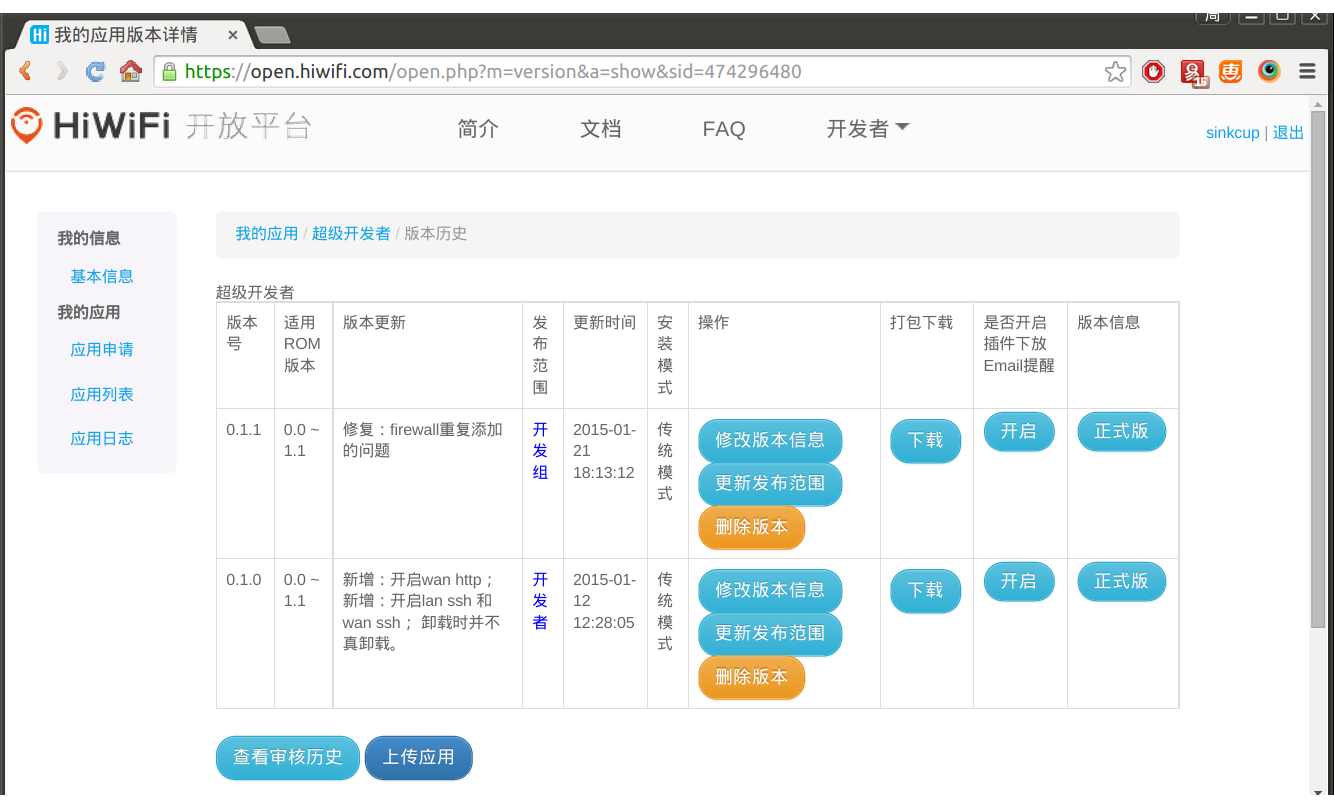
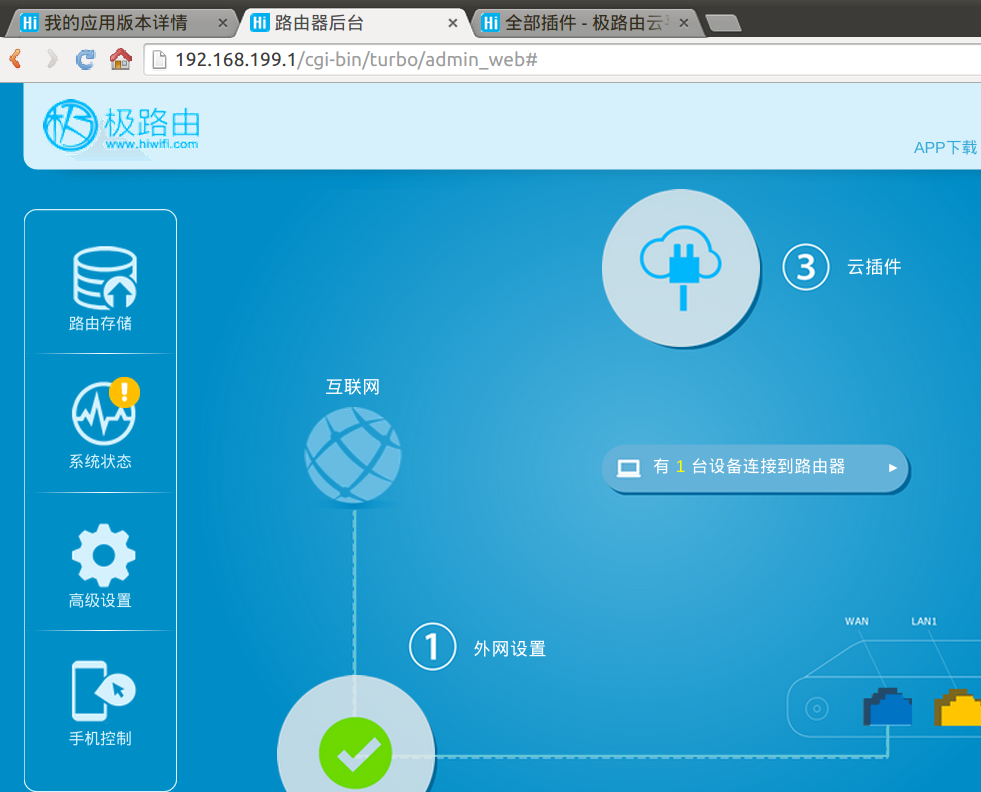
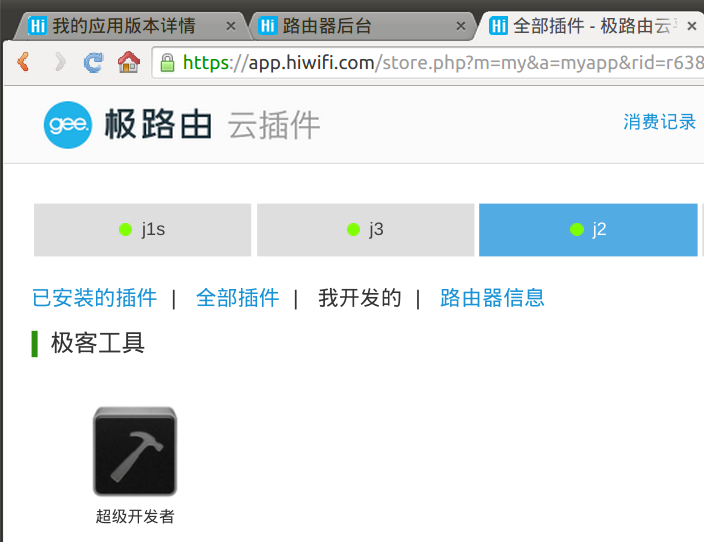
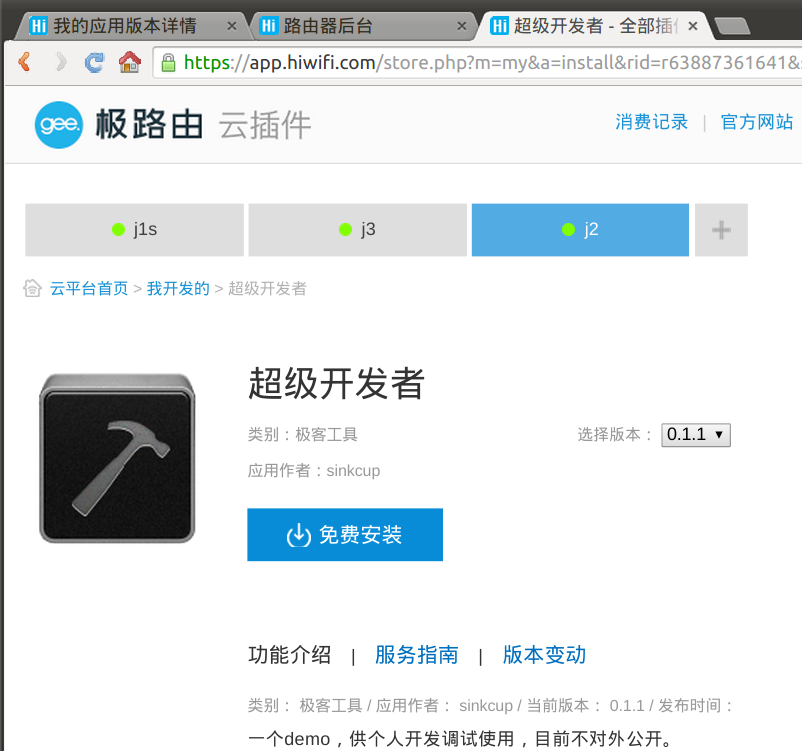
带网页配置界面的插件
上面的插件实现了打开root ssh,端口默认是22,没有让用户输入。如果用户想安装时指定端口,以后随时可以修改端口,怎么办?那就需要网页配置界面了。
请看这个项目:内网分发(https://coding.net/u/openwrtio/p/lan-distribution-for-gee/git),在极路由开放平台申请了应用,英文名为lan-distribution,做网页配置界面需要增加两个文件:manifest.json和以插件英文名命名的配置文件,比如lan-distribution.conf。
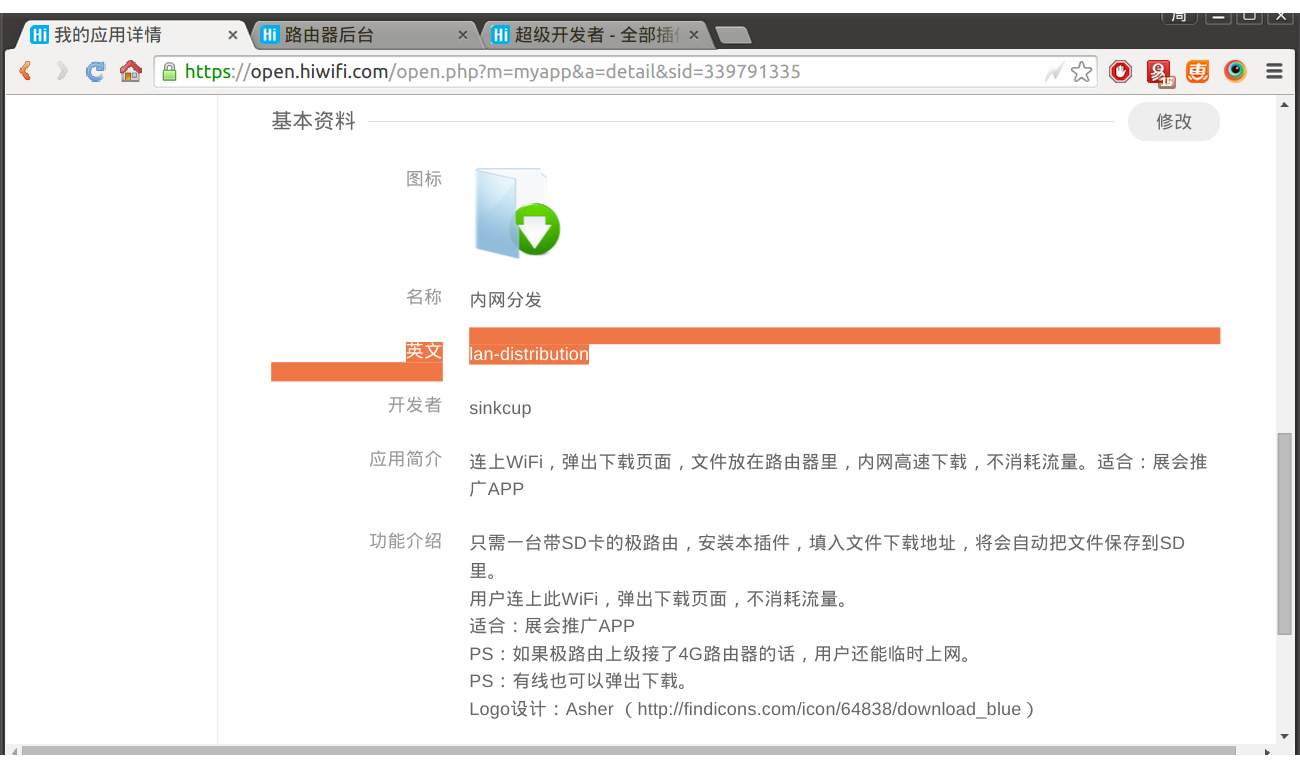
manifest.json定义网页界面,代码节选如下:
{
"manifest_version": "2.0.0",
"configuration": [
{
"name": "文件下载链接",
"type": "text",
"variable": "fileuri",
"defaultvalue": "",
"required": 1,
"description": "会保存到路由器中,离线可用。由于路由器不支持https,请填入http"
},
{
"name": "下载后跳转上网",
"type": "radio",
"variable": "redirectafterdownload",
"choices": "是=1;否=0",
"defaultvalue": "1",
"required": 1,
"description": "如果路由器接入了外网,建议开启此项"
}
]
}
极路由插件的网页配置支持这几种数据类型:text、textfile、radio、selection、checkbox,分别表示单行文本、多行文本、单选框、下拉菜单、多选框,具体说明请看官方文档:https://open.hiwifi.com/open.php?m=doc&a=index#dev_wiki。
每段输入都有个"variable"字段,在网页中输入的内容会被赋值给这些变量(注意:极路由variable变量不能使用下划线)。script脚本执行install时如何获取这些值?那就需要app配置文件了,比如这个app的是lan-distribution.conf,代码如下:
file_uri={$fileuri}
redirect_after_download={$redirectafterdownload}
网页安装时,右边的变量会被自动替换。然后在script脚本中导入即可,代码如下:
#!/bin/sh
install() {
# web安装界面的参数会保存到文件,这里引用参数文件,即可使用变量
. ./lan-distribution.conf
wget -O /tmp/data/test "$file_uri"
if [ $? -ne 0 ]; then
echo "<User-Echo>下载失败"
exit 1
fi
}
打包,上传到极路由插件市场,安装,界面如下图:
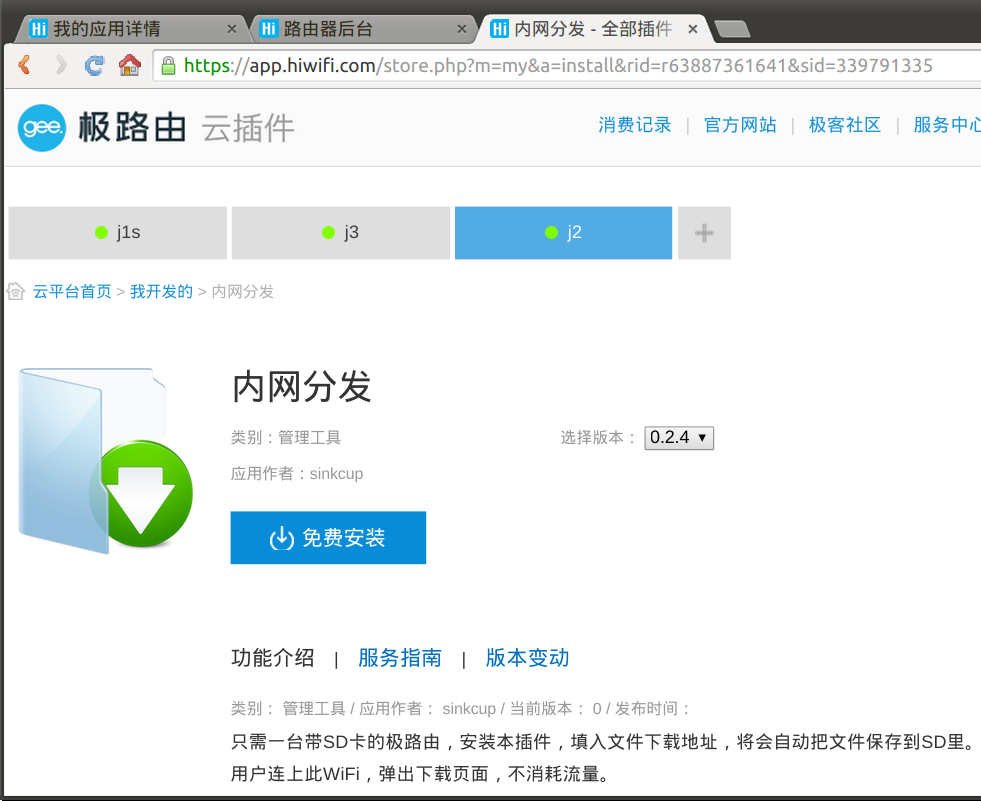
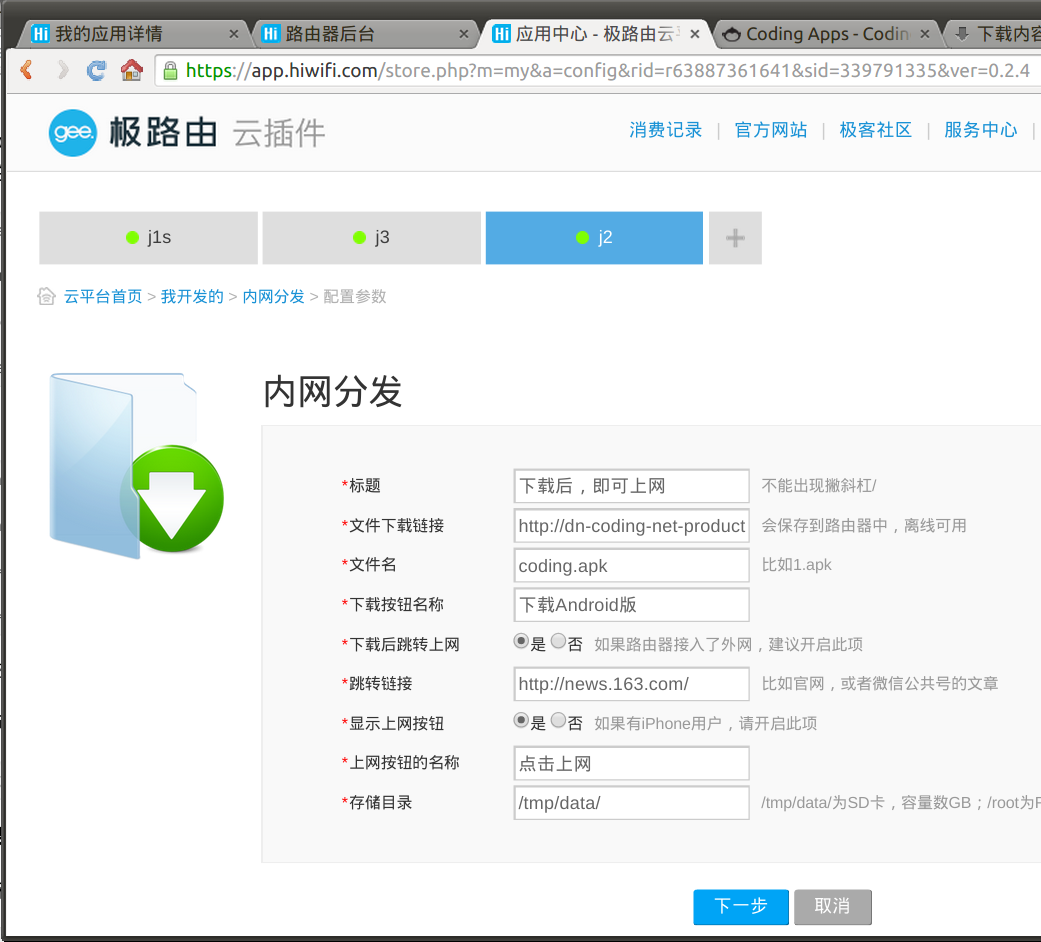
自定义opkg软件仓库的插件
在刚才的script文件中,还会看到这些代码:
install() {
set_opkg_src
opkg update
opkg install nodogsplash
}
get_arch() {
opkg print-architecture | grep "ralink" >/dev/null
if [ $? -eq 0 ]; then
echo "ralink"
return 0
fi
opkg print-architecture | grep "ar71xx" >/dev/null
if [ $? -eq 0 ]; then
echo "ar71xx"
return 0
fi
echo "<User-Echo>get arch失败"
exit 1
}
set_opkg_src() {
echo "set_opkg_src start"
arch=`get_arch`
tmp=$(grep 'src/gz openwrtio ' /etc/opkg.conf)
if [ $? -eq 0 ]; then
return 0
fi
openwrtio_src='http://dl.openwrt.io/vendors/gee/'$arch'/packages'
#gee use /etc/opkg.conf and /etc/opkg.d/*.conf
echo 'src/gz openwrtio '$openwrtio_src >> /etc/opkg.conf
for one_file in $(find /etc/opkg.d/ -iname '*.conf'); do
echo 'src/gz openwrtio '$openwrtio_src >> $one_file
done
echo "set_opkg_src end"
return 0
}
可以看出这段代码添加了opkg软件仓库,然后安装了nodogsplash这个软件,这是因为极路由官方仓库里没有这个软件(也没有地方给大家提交软件),开发者就需要从别的地方安装。极路由有多个架构(ar71xx、ralink和mediatek),所以代码里先判断架构,然后添加不同的源(源列表在以前的文档里:《opkg软件源》)。
可以看出极路由云插件是对opkg的再封装,提供了一个远程网页安装和配置界面,很方便。是一大创新,和luci本地网页界面的需求不同。
练习题
尝试为“超级开发者”做一个网页配置界面,实现修改端口的功能。